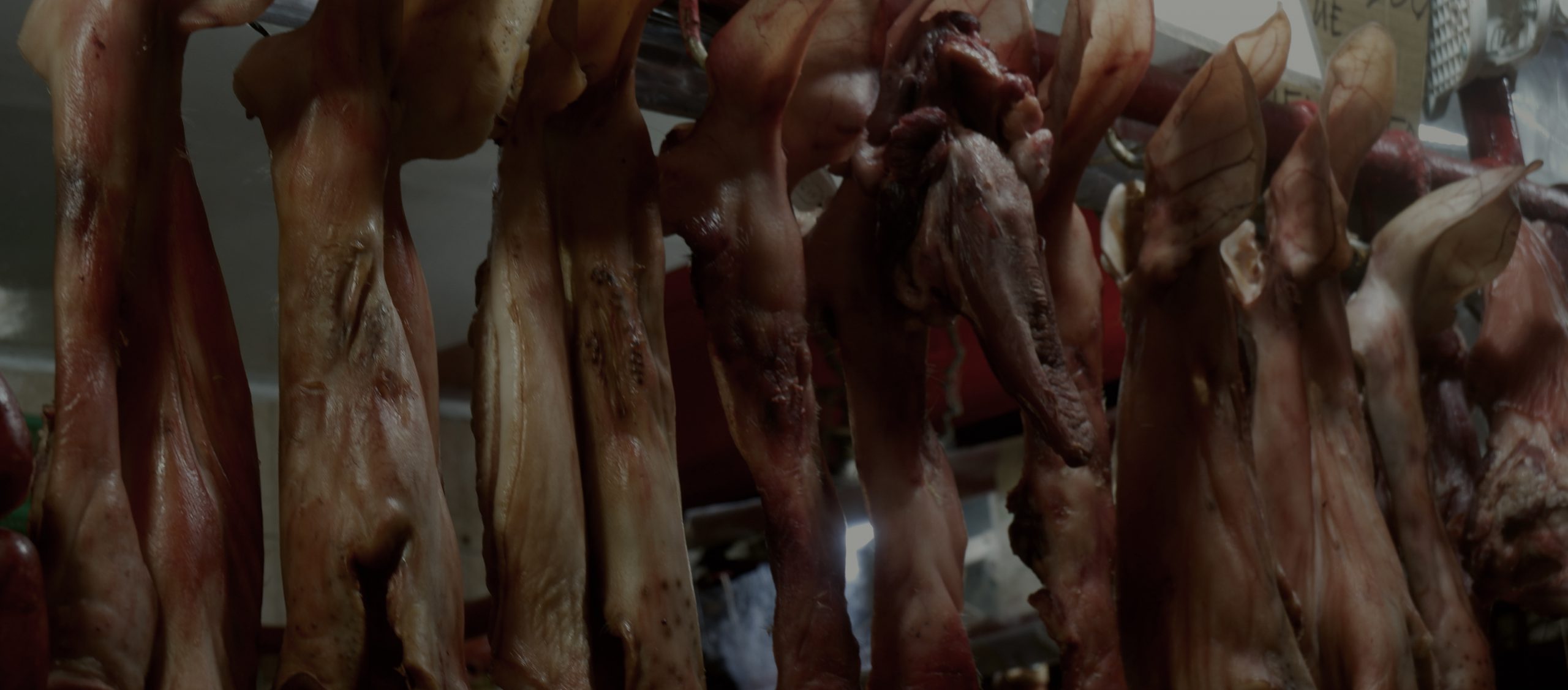Again and again, farmers defy land grabbing in Hacienda Luisita
The land had just yielded a bountiful rice harvest. Farmers were just about ready to sow mongo seeds to rejuvenate the land and prepare it for the next planting season. But on the morning of January 16, farmers in Brgy. Cutcut woke up to find that a hut, a security outpost of the Cojuangco-owned Tarlac […]


The land had just yielded a bountiful rice harvest. Farmers were just about ready to sow mongo seeds to rejuvenate the land and prepare it for the next planting season.
But on the morning of January 16, farmers in Brgy. Cutcut woke up to find that a hut, a security outpost of the Cojuangco-owned Tarlac Development Corporation (Tadeco), has been erected right smack in the middle of their fields.
In minutes, the farmers mobilized themselves. Despite threats by the armed guards manning it, they were able to dismantle the outpost.
The next day, the farmers saw that the hut they dismantled was standing once more. This time, there were more Tadeco guards around, who threatened to call for military and police back up. But before the state’s security forces came, some members of the media came. This paved the way for negotiations, ending with both parties finally agreeing to a status quo or to leave things as they are (“walang galawan”).
The next day, the hut was gone. “I don’t know what happened to it,” 59-year old farmer Rudy Corpuz said, chuckling.
But the tension in Hacienda Luisita is just beginning to escalate, the farmers believe, as the family of President Aquino step up efforts to maintain control over the vast estate.
Confrontations between farmers and armed guards and goons of Tadeco since last year has resulted in the bulldozing of lands, filing of trumped-up charges and arrest of farmers and their supporters, and the killing of one farmer.
Meanwhile, Department of Agrarian Reform’s (DAR) land distribution process–marked by the controversial “tambiolo” or raffling of lots–has been accompanied by the heavy deployment of police ang military forces.
Pong Sibayan, acting chairperson of Ambala (Alyansa ng Manggagawang Bukid sa Asyenda Luisita), fears that the tension may escalate into an incident similar to the 2004 massacre of striking hacienda workers. “The people are terrified,” she said.
Still, more than 400 farmers have refused to give their lands back to their landlords under what they claim as the “sham” land distribution under the Comprehensive Agrarian Reform Program (CARP). Under the watchful eyes and guns of private guards and state forces controlled by the most powerful man in the country, they continue tilling their lands collectively and demand for free land distribution.
‘Reconcentration’ of lands to Cojuangcos
In a letter given recently to farmworker beneficiaries, the DAR threatened to disqualify by February 15 those who still refuse to sign an Application to Purchase and Farmer’s Undertaking (APFU). “The failure to abide by this deadline means giving up your right as a beneficiary of CARP in Hacienda Luisita,” the letter said.
Farmers find this ‘deadline’ unconscionable.

In a dialogue with low-ranking DAR officials last January 17 (farmers complain that not even a department undersecretary faced them), the farmers said that they refused to sign the APFU because the document refused to recognize collective land ownership–even if such is an option under the law–and tied them to the payment of monthly amortization, which if unpaid for three years would mean land forfeiture.
“In truth, we have paid for this land many times over with our sweat and blood. It is already ours. Also, we are still waiting for the P1.33 Billion that the management of Hacienda Luisita still owes us–that amount alone should be enough to pay the government,” said Sibayan.
The P1.33-B owed to farmers from the sale of land for the Subic-Clark-Tarlac Expressway is just one of the many other contentious issues of the Supreme Court decision on Hacienda Luisita that remains unresolved because of what the farmers alleged is a “collusion” between the Cojuangcos and the executive department.
Meanwhile, even as the DAR has claimed successful distribution of Certificate of Land Ownership Awards (CLOA), farmers say that only xerox copies of CLOAs were given out. These also had little bearing, since the farm lots awarded to them by the DAR through the raffle were far from their homes or fields they were currently tilling.
“Many farmers in our barangay were given lots in far-away barangays Pando and Mabilog. A one-way tricyle ride would cost them P100. Also, most cannot afford to re-invest in irrigation, as the government has given us no support. So what happens is that many have no choice but to rent out their lands instead,” said Raymundo Alcaide, a farmer from Brgy. Balete who were among those who refused to participate in the raffling of lots.
Lands in the hacienda are rented out for as low as P7,000 per year. Meanwhile, other farmers have given up their lands as collateral, for “loans” that reach up to P100,000.
Ambala says that sugarcane growers who are “dummies” of the Cojuangcos now control many of these lands rented out or given up as collateral by farmworker beneficiaries, paving the way for the re-concentration of land to their old landlords. This is exactly what the DAR and President Aquino has set out to achieve, the group says.
Alcaide is one of many Ambala members who instead participate in the “bungkalan” or collective tilling that farmers have set up since 2005, a year after the infamous massacre. A few days before Christmas last year, he once again got a taste of the kind of violence that the Cojuangcos were capable of, when his hut and fields were bulldozed by Tadeco guards.

“They flattened everything to the ground, my rice plants and root crops. They didn’t leave anything. Even my animals were gone,” he said.
Of the farmers who immediately rushed to defend their fields, eight were arrested.
Price of resistance
The farmers believe that the almost 400 hectares now being claimed by Tadeco in the villages of Balete, Cutcut, and Mapalacsiao is of special interest to the Cojuangcos. These lands nearest Tarlac City proper is part of what is believed to be a land use plan to turn Hacienda Luisita into an industrial, residential, and commercial zone.
These are 268 hectares in Brgy. Balete, 104 hectares in Brgy. Cutcut, and several more hectares in Brgy. Mapalacsiao. Tadeco claims that these lands have been reclassified for non-agricultural uses, and are not covered by the SC decision.
Farmers who have tilled the lands say otherwise. “I have been been a farm worker here since I was 17 years old. My parents have been working the land even before that,” the 60-year old Alcaide said.
According to Ambala, Tadeco is exploiting a loophole in the SC decision, which only covered 4,915 hectares of the more than 6,000-hectare hacienda. The coverage was further reduced to 4,099 hectares after the DAR survey excluded roads, bridges, canals, and other areas that farmers believe to be of commercial value.
After all the exclusions, each farmer beneficiary is now only allotted 0.66 hectares of land, which farmers say will easily revert back to the Cojuangcos if the “sham” land distribution proceeds unchallenged.
But challenging landlords and their alleged “cohorts” in the Aquino administration has a steep price.

Last November 1, 28 year-old farmer Dennis de la Cruz was killed after a night of standing watch over the “bungkalan.” At 6 a.m., he was found dead by the road in Brgy. Balete, beside an electric post that fell during the storm Santi. He was stabbed on his side with an icepick.
Sibayan, who saw the body, said that it was obviously foul play related to their continuing struggle for land.
Previously, de la Cruz was being pressured by Tadeco guards to abandon his fields, which he made abundant last year with rice and vegetables such as eggplant, okra, tomatoes, bitter gourd, and string beans.
Such incidents of harassment and outright violence have stricken terror into the hearts of the farmers. “Now, I don’t go out at night. I never sleep at my own house anymore,” said Sibayan, who recalled receiving house visits by armed men when she started becoming an outspoken leader.
Sibayan is a survivor of the 2004 Hacienda Luisita massacre. A bullet grazed her back after she saved a fellow worker who was being beaten and dragged away by military men.
When the “bungkalan” started, Sibayan was elated that she and her fellow farmers were finally able to till their own land. For her, it was way better than receiving P9.50 per day as a hacienda worker. Her family didn’t run out of rice to eat, and she was able to sell vegetables at least twice a week.
But she realized that their struggle was not over; it was just beginning. “If we don’t remain vigilant, our gains will be lost. We have sacrificed too much to let that happen. We will continue to fight,” she said.





